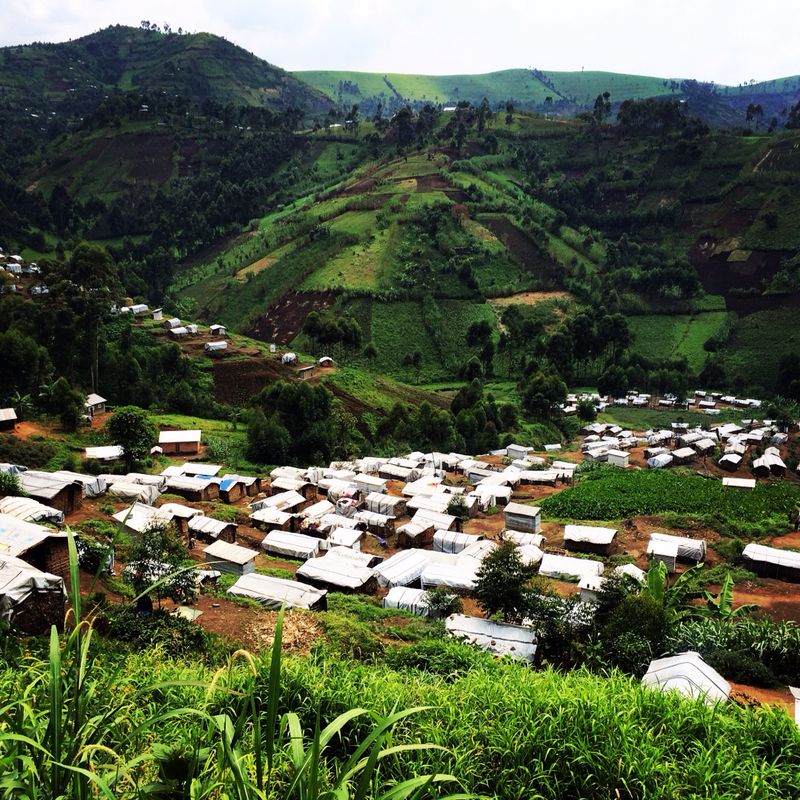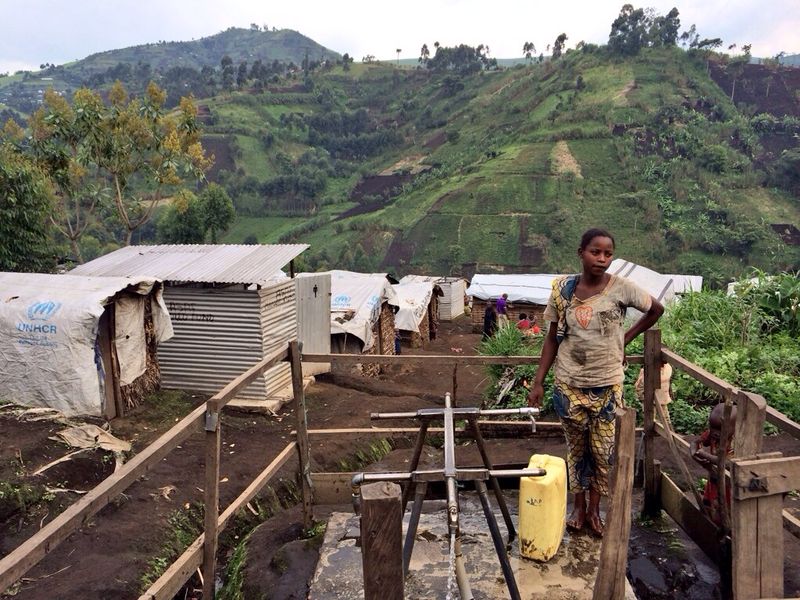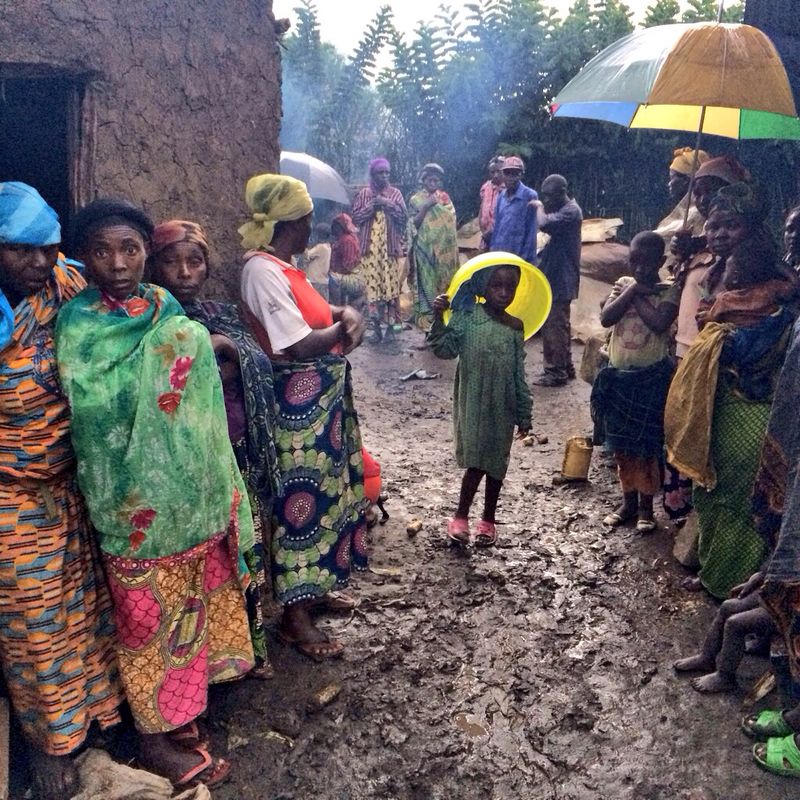![IMG-20150105-WA0056 [DRC]](https://www.thedailyvox.co.za/wp-content/uploads/2015/01/IMG-20150105-WA0056-DRC.jpg)
Continued turmoil and sporadic violence are still forcing people from their homes in many parts of the Democratic Republic of Congo (DRC) – as they have done for the past two decades. In the North Kivu province, in eastern DRC, the camps set up for the internally displaced people, or IDPs, have now became a feature of the landscape. But impending camp closures are threatening even this fragile existence. CELINE SCHMITT, from the UN Refugee Agency, tells The Daily Vox about her experience with the displaced and refugees in the region, and how they dream of peace.
The first time I went to the Masisi territory in the eastern DRC in 2010, I was surprised – shocked even – when I saw how many of the gorgeous green hills were dotted with thousands of plastic tarpaulin houses, or tents. Before long, I got used to it.
In and around the town of Masisi, some 25,000 displaced people live in five IDP sites. The sites on the hills of Masisi have been operational since 2007.

Every time I visit the camps, I hear the same stories. I first visited the camps almost five years ago. So many of the displaced I met back then are still here in the camps, still dreaming the same dream.
They all dream of going home, back to a normal life, but ongoing conflict in their surrounding villages prevents them from doing so. They remain worried that they will become vulnerable back in the villages.
While in some areas, people were able to return home between the end of 2009 and 2011, new conflicts forced the same people to flee again and seek refuge in the same camps.
“I am here since four years. I have tried to go back home but I have been chased away again by the rebels. When I arrived [home], I saw men with weapons and they tried to kill me. It was last year. I forced myself to run. Even myself, I don’t know how I managed to escape. God helped me,†says 80-year-old Sabina, who lives in Kalinga IDP camp in Masisi.
I am always inspired by the strength and resilience of the displaced people living in the camps, despite their difficult living conditions. The fact is they have no choice but to survive.

Some of the people here have lived in plastic tarpaulin huts for years. They have no access to land. To feed their families, they work in the fields of the local population for 50 US cents (about R5.80 at current exchange rates) per day.
As you can imagine, they struggle to pay their children’s school fees. The cost of sending one kid to school amounts to $5 on a quarterly basis. This means working for 10 days to send one child to school and 50 days to send five children. As a result, many children just can’t go to school.
Another source of income for the people here is to enter the forests and collect firewood to sell. But when they do, they expose themselves to abuse, including violence and rape.
I have met many women who have told me that their only way to earn money to feed their children and send them to school was to become sex workers.
Recently, the Congolese authorities announced that the IDP camps should be closed and displaced people should go back home. They say that peaceful times have arrived and that the camps promote criminal elements.
The first camp to be affected was the Kiwanja IDP camp on December 2, 2014. More than 2,300 people living in the camp in Rutshuru were told to leave the camp and go home, immediately. Within a day, everyone had been forced to leave the camp and their makeshift shelters were burnt to the ground.

I went to Kiwanja in mid-December and visited the place of the former IDP camp. It was the rainy season, and we were in the middle of a downpour.
Many of the IDPs who were living in the camp came to see me when I arrived. Since the destruction of the camp, they try to live with host families, local people who often open their homes to those without one.
“I was in Kiwanja [IDP camp] for the past six years. I fled Nyamitwitwi in Binza. The FDLR (Democratic Forces for the Liberation of Rwanda, a rebel group) continue to rule the zone where I come from. They are still there. My fields are now the FLDR camp. How can I go home? Am I going to ask the FDLR to leave my field? It’s impossible,†says 48-year-old Celestine*.
“At some point I had decided to go back home with my daughter. When we arrived, they raped us. I managed to escape with my daughter and decided that I will never leave Kiwanja againâ€, she tells me frantically.
Since this camp was destroyed, Celestine lives in the courtyard of a family living next to the former Kiwanja site, sleeping outside even when it rains. As she is sick with tuberculosis, this situation makes her even more vulnerable.
Twenty-three families shelter in the same courtyard as her, including children. They have nowhere to hide when it rains and have no blankets to keep them warm. They do not have homes to go back to. They have nowhere to go.
Even if life in an IDP camp is not the life they dream of, and even they want to go home, the camps are still the safest option. Life in a camp is still better than a life of violence and insecurity in their villages.
“We would like to go home, but our villages are still insecure and until our villages are peaceful, we need to stay in the camps and we would like to be assisted,†42 year-old Bernadette tells me in Bihito IDP camp in Masisi.
Closing the remaining camps now would be a travesty.
*Names changed to protect identity.

Editor’s Note: More than 210,000 displaced people are still living in 60 camps throughout the North Kivu Province.
The UNHCR has raised concerns about the announced closure of the IDP camps to the Congolese authorities. While the improved security situation in some areas of North Kivu province has led to the voluntary return of displaced people, especially around Goma, the UNHCR says that the relocation or return of IDPs should be voluntary and in compliance with international Humanitarian and Human Rights Law.
For the IDPs who are unwilling or unable to return to their villages of origin due to insecurity, the UNCHR recommends that measures to help them should include access to livelihood opportunities in their locations of displacement. They also encourage that local integration near the sites be considered as a solution.
– Images: Celine Schmitt








